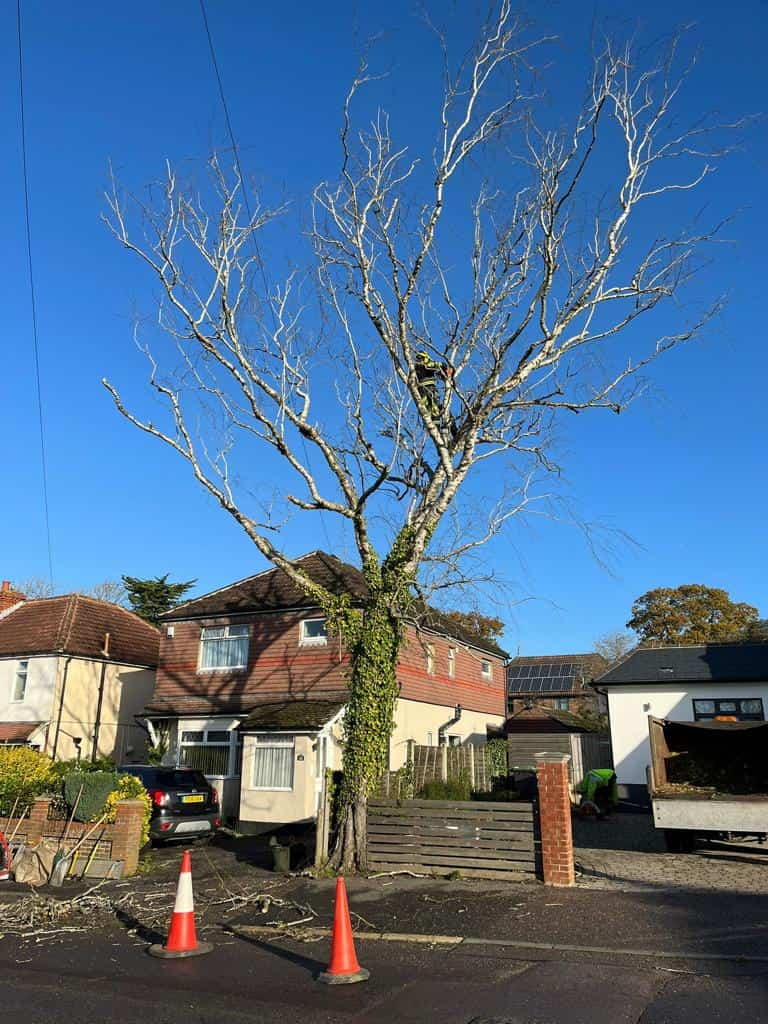Reducing the height of a tree, often referred to as crown reduction, is a common request from homeowners who want to manage light, safety, or property aesthetics. However, tree height reduction is often misunderstood, and misconceptions can lead to poor decisions that harm the tree or create long-term risks. At NS Tree Surgery Witley, we provide expert tree services to homeowners in Witley, Surrey, ensuring that tree work is carried out safely and correctly.
Here are seven common misconceptions about lowering tree height—and the truth behind them.
1. You Can Just Cut the Top Off the Tree
Many people believe that lowering a tree’s height is as simple as cutting off the top. In reality, this practice, known as topping, is highly damaging. It leaves large, exposed wounds that are prone to disease, weak regrowth, and eventual structural failure. Professional crown reduction is far more precise, removing specific branches while maintaining the tree’s natural shape and health.
2. Shorter Trees Are Always Safer
While it seems logical that reducing height makes a tree less likely to fall, improper height reduction can actually weaken it. Removing too much foliage disrupts the tree’s ability to produce energy, leading to poor health and potentially unstable new growth. A professionally balanced reduction provides safety without compromising long-term stability.
3. Any Time of Year Is Fine for Tree Height Reduction
Tree work should be timed to protect the health of the tree and comply with UK wildlife regulations. For example, heavy pruning in spring can interfere with new growth, and work during nesting season (March to August) may require extra checks for protected wildlife. The best time for crown reduction depends on the species and local environmental conditions.
4. Height Reduction Solves All Light Problems
While reducing tree height can increase sunlight, it may not always be the best or only solution. Selective crown thinning or removal of specific branches can often achieve better light penetration without major height loss. A professional tree surgeon can recommend the most effective and least invasive approach.
5. Once Reduced, the Tree Won’t Grow Back Quickly
After a reduction, trees respond with vigorous regrowth, especially if cut incorrectly. This regrowth is often weaker and grows rapidly toward the light, meaning the problem can return quickly if not managed professionally. Correct pruning encourages slower, stronger, and healthier regrowth.
6. Anyone with a Chainsaw Can Do It
Tree height reduction is a highly skilled task that requires knowledge of tree biology, structural integrity, and safe cutting techniques. DIY attempts or hiring unqualified contractors can result in:
- Structural damage to the tree
- Safety hazards from falling branches
- Increased long-term maintenance costs
Using a certified tree surgeon ensures the work is carried out to professional standards, protecting both your property and the tree.
7. Lowering Tree Height Devalues the Tree
When done correctly, height reduction can actually enhance a tree’s appearance and longevity. Professional tree surgeons focus on maintaining natural form, health, and safety. A well-maintained tree remains an asset to your property, improving kerb appeal and reducing risk.
Conclusion
Lowering tree height is not as straightforward as many homeowners assume. Misconceptions about tree topping, safety, and regrowth can lead to mistakes that compromise the tree’s health and create future hazards. Professional assessment and careful crown reduction are essential for achieving the desired results without harming the tree.
If you are considering reducing the height of a tree on your property in Witley, Surrey, contact NS Tree Surgery Witley. Our experienced team provides expert advice and safe, professional tree care to ensure your trees remain healthy, attractive, and secure.
Call us on: 01483 967 989
Click here to find out more about NS Tree Surgery Witley
Click here to complete our contact form and see how we can help with your tree needs.

